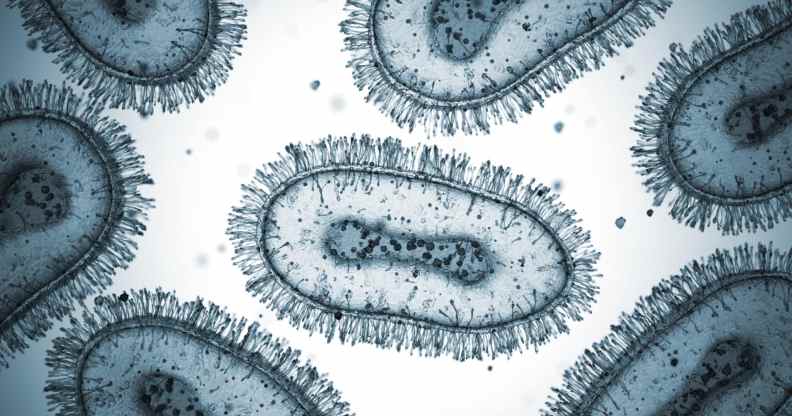Monkeypox: New research explains how outbreak is different from past cases

French monkeypox patients have been saying how psychologically painful the virus has been for them. (Getty)
The new monkeypox outbreak that has swept the globe is more “unusual” than past versions of the virus, scientists have found.
Health experts have been confused as to how monkeypox went from a relatively rare disease to one that has infected more than 25,300 globally.
But slowly and steadily, they are gaining a clearer understanding of the outbreak – including how the virus’ symptoms have changed over time.
A review of 185 cases of monkeypox published Tuesday (2 August) in the British Journal of Dermatology found that monkeypox’s hallmark pustules have changed into rarer “pseudo-pustules”.
In the past, monkeypox patients reported having pustules spread across large sections of their bodies. Now the puss-filled lesions are few and far between, now only appearing in a single area of the body, and are much harder in appearance.
These pseudo-pustules are whiter in colour and the top layer cannot be scraped away to reveal the pus inside. “This feature is very rare in other diseases, so is a very clear sign of monkeypox,” said Dr Ignacio García Doval, coordinator of the research from the Spanish Academy of Dermatology.
Spanish dermatologists identified other symptoms not seen previously, such as ulcers that spring up around the pseudo-pustules by the nose, mouth or genital areas. They also saw a symptom they called “monkeypox whitlow”, where the finger becomes infected and a rash forms around it.
Maonkeypox’s classic flu-like symptoms, swollen lymph nodes and an all-body rash all remain common, the researchers added.
Doval suggested the new strain of monkeypox might be the result of how sex is now a common route of transmission.

Health officials across the globe are calling on people to get their monkeypox jab. Pictured: A New York City pop-up monkeypox vaccine stall. (John Smith/VIEWpress)
“Our research shows that the symptoms of the current outbreak are unusual and there is evidence that this is due to skin-to-skin contact during sex. Rather than the typical widespread rash seen in past cases, recent cases tend to have far fewer skin lesions, often in one location,” Doval said.
The researchers added that HIV has no impact on the severity of monkeypox symptoms.
When monkeypox was first seen inching across Europe in May, health officials were stumped. The virus is not known to spread that easily among people, yet somehow it had been acquired by dozens of people within days.
At least four people outside of Africa have died of monkeypox since.
But peaking into monkeypox’s genetic information has yielded some answers. Scientists say the virus has become better at jumping between people and may have been doing so for years undetected. One preliminary analysis found that monkeypox has nearly 50 new mutations compared to the virus scientists thought they knew so well in 2018.
Monkeypox has so far disproportionately affected queer men. In a study of more than 500 cases that were reported in 16 countries between April and June, investigators found that 98 per cent of monkeypox cases were among gay and bisexual men as well as men who have sex with men.
While monkeypox is not a sexually transmitted disease, an analysis found that 95 per cent of cases were spread through the kind of sustained, close skin-to-skin contact only seen during sex.
The World Health Organisation (WHO), having declared monkeypox a public health emergency, warned that it’s only a matter of time before monkeypox spreads beyond queer men.
So those queer men who have been infected by monkeypox have called on all eligible people to get vaccinated. Among them is gay porn star Silver Steele, who has documented his experience with the disease on Twitter.
“I am now at two weeks and the lesions on my face are brutal,” Steele said in one tweet, adding: “The pain I’ve been experiencing keeps my eyes full of tears and keeps my light dimmed.
“I wouldn’t wish this on my worst enemy…”

